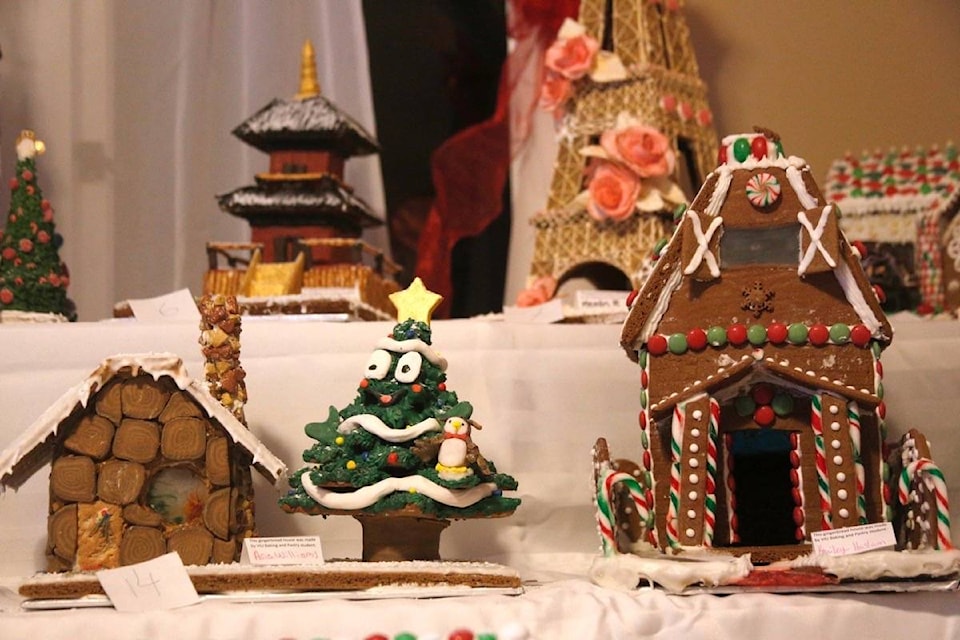Anyone who’s visited Milner Gardens and Woodland for its Milner Christmas Magic evenings (the last one on Dec. 20) will have no doubt seen the impressive gingerbread houses made by Vancouver Island University (VIU) baking and pastry arts students on display for a silent auction.
While pastry instructor Ken Harper will have awarded those gingerbread houses to the top bidders, not everyone is so lucky to have a unique creation made by soon-to-be professionals as their centrepiece to impress the family this Christmas.
But Harper says fear-not — anyone can make a gingerbread house.
Still, for anyone worried about sliding roofs or falling walls, he’s got a few tips for you.
Called the introduction to structural decorating, the VIU emphasizes that students take their time.
“You can make a phenomenal gingerbread house in about five or six hours,” he said (though that includes making your own gingerbread). “But those five or six hours need to be spread out over a week of a week-and-a-half. If you try to do it all at once, I would have difficulty myself.”
One of the first things he has students do is to think through a design, and then make a full-scale model of it using cardboard and tape.
The reason behind that is: “if you can make it from cardboard and tape, you can make it from gingerbread.”
Next is the dough. The individual recipe doesn’t matter too much, he said. What’s most important is that you leave your dough to rest in a fridge overnight.
That allows the dough to relax, lets the fats in the recipe firm up making it easier to work with, and “the most important one that nobody thinks about is actually the hydration of the dough. It takes a while for the flour to absorb all the liquids, and once that flour fully hydrates, the consistency of the dough changes dramatically.”
The next tip is to use classic royal icing as your glue.
Hot sugar can be used, but that requires a lot of technique, and can lead to some singed fingers.
The royal icing will firm up nice and hard, but, again, needs time to fully set.
“If things are still not quite stuck together and you’re trying to pile things on top of it, it’s not surprising that things may collapse,” said Harper.
Other than that, Harper said trying to make a gingerbread house is a great first step and a big learning opportunity - one that even some of his students don’t always start off keen on doing.
“Many of our students, they get into this particular assignment reluctantly because they feel ‘I’m not creative, I’m not artistic,’ so we really want to prove to the person… that anybody can do this, and anyone can make something that’s going to have a really nice presentation. Even people that don’t feel they are creative, often just doing it is a real big thing.”
The results of this lesson were on display at Milner Gardens as a fundraiser for an upcoming student trip to Brussels in Belgium and Paris, France. Students will be touring the largest chocolate factory in Europe, do some hands-on training in Parisian bakeries and much more.
Harper said he wasn’t certain how much money the silent auction fundraiser brought in this year, but said in previous years, it had raised up to $900.
